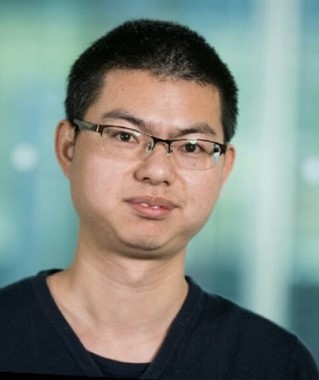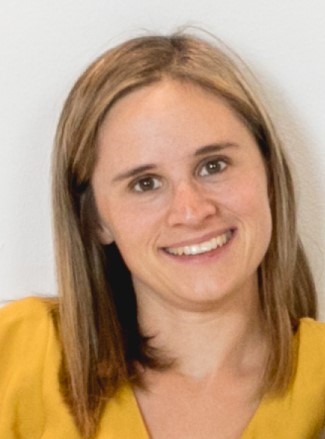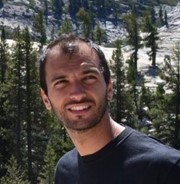Topic I: Innovative sensors and sensor technologies

Tutorial 1: Next generation gas sensors: surprising advantages over last-century designs drive societal impact
Speaker: Radislav A. Potyrailo, GE Research, Niskayuna, NY, USA
Abstract: It is conventionally expected that the performance of existing gas sensors may degrade in the field compared to lab conditions because (i) a sensor may lose its accuracy in the presence of chemical interferences and (ii) variations of ambient conditions over time may induce sensor-response drift. Breaking this status quo in poor sensor performance requires understanding the origins of design principles of existing sensors and bringing new principles to sensor designs. Existing gas sensors are single-output (e.g., resistance, electrical current, light intensity) sensors, also known as zero-order sensors. Any zero-order sensor is undesirably affected by variable chemical background and sensor drift that cannot be distinguished from the response to an analyte. In this tutorial, we will demonstrate that to address these limitations, multivariable gas sensors are emerging as the next generation reliable analytical instruments. The tutorial will be structured as three segments that will cover the fundamental and practical aspects of design rules of multivariable sensors, sensor requirements for emerging applications, and comparison of performance of conventional and multivariable sensors with traditional analytical instruments. Multivariable gas sensors (also known as high-order sensors, intelligent sensors, multiparameter sensors, and virtual sensor arrays) are individual sensors that are designed with several independent responses and operate as the first-order analytical instruments. We will present results from our numerous projects and from other research teams that demonstrate three-dimensional, four-dimensional, and even five-dimensional dispersion of individual sensors, differentiation of complex odors and closely related volatiles, and quantification of analytes in mixtures. Next, we will discuss recent reported methodologies to improve stability of multivariable sensors. Design principles of electrical and photonic types of first-order sensors open opportunities for diverse emerging monitoring applications that cannot afford relatively high electrical power demands, relatively high instrument acquisition cost, and frequent periodic maintenance, typical of traditional analytical instruments.
Short Bio: Radislav Potyrailo is a Principal Scientist at GE Research leading the growth of GE’s industrial, consumer, and homeland security sensing technologies for gas, chemical, and biological detection. He has an Optoelectronics degree from Kyiv Polytechnic Institute (1985) and a PhD in Analytical Chemistry from Indiana University, Bloomington, IN (1998). At GE Dr. Potyrailo has been directing programs on designs of physical transducers, materials with multi-response mechanisms to ambient environments, data analytics, and system engineering. Dr. Potyrailo has been serving as a technical lead on GE R&D programs transitioned to GE businesses or GE partners for commercialization. Examples include optical multi-parameter chemical sensor for GE Water, wireless gas sensors for GE Oil & Gas, multi-parameter oil sensor for GE Renewable Energy, and GE Ventures start-up company on radio-frequency sensors. Dr. Potyrailo has been serving as a PI on programs funded by AFRL, ARPA-E, DARPA, DHS, DOE, DTRA, JPEO, NIH, NIOSH, NETL, and TSWG. Dr. Potyrailo is the initiator of the First Gordon Research Conference on Combinatorial and High Throughput Materials Science and serves as an editor of the Springer-Nature book series “Integrated Analytical Systems”. He is the North America Chair of International Society for Olfaction and Chemical Sensing and is the Chair of the Device Working Group of the MEMS and Sensors Industry Group. Dr. Potyrailo has 150+ granted US Patents and many publications (Google Scholar h-index 50+). He has delivered 15+ keynote/plenary lectures and numerous invited talks at National and International Meetings. He is a recipient of the Prism Award by SPIE/Photonics Media (2011) and the AMA Innovation Award (2021). Dr. Potyrailo is SPIE Fellow (2011) and recent IEEE Fellow (2023), covering the whole electromagnetic spectrum of his sensors. Dr. Potyrailo has been appointed as a Distinguished Lecturer of the IEEE Sensors Council for the period 2024-2026.

Tutorial 2: Olfactory biosensors and biomimetic electronic noses
Speaker: Yanxia HOU-BROUTIN, French National Center for Scientific Research, France
Abstract: Nowadays, there is an increasing demand for reliable analysis of volatile organic compounds (VOCs) in various fields. Sensor-based artificial olfaction is considered as a promising alternative for the standard analytical method such as gas chromatography coupled to mass spectrometry. In such a context, two families of sensor-based systems including olfactory biosensors and electronic noses have been extensively developed in the last four decades. This tutorial will give an overview on olfactory biosensors based on biological materials such as olfactory neurones, olfactory cells, and biomolecules such as olfactory receptors (ORs), odorant binding proteins (OBPs). The main challenge is how to conserve their sensing properties and stability. Herein, the immobilization strategies employed for such a purpose are highlighted. In the second part, the design and the use of more stable biological molecules such as DNA and peptides for the development of biomimetic electronic nose will be presented.
Short Bio: Y. Hou obtained her PhD in Analytical Chemistry at Ecole Centrale de Lyon in France in 2005. In 2006, she did her first postdoc at University of California San Francisco and Touro University (USA), followed by a second postdoc at CEA-LETI, Grenoble (France). Since 2008, she has been employed by French National Center for Scientific Research (CNRS) as permanent scientific researcher. Since 2022, she is research director at CNRS. She has strong expertise on surface chemistry, surface functionalization and characterization, biosensors and biochips for the biomedical applications. Since 2008, she leads the development of novel optoelectronic noses and tongues based on surface plasmon resonance imaging (SPRi) at the laboratory of SyMMES, Grenoble (France). Her research interests include also nanotechnology such as the elaboration and engineering of hybrid multifunctional micro/nanoparticles for nanomedicine. Today, her research activities focus on the development of novel electronic noses by designing novel sensing materials and exploration of their potential applications in diverse fields. She is one of the co-founders and scientific counselor of the company Aryballe, created in 2014 in Grenoble (France) for the miniaturization of the optoelectronic nose for digital olfaction. Today, she is the head of a research group of 24 persons at the laboratory of SyMMES.

Tutorial 3: From graphene to beyond: unveiling the potential of 2D materials in gas sensing application
Speaker: Shirong Huang, TU Dresden, Germany
Abstract: Gas sensors play a pivotal role in monitoring air quality, ensuring public safety, and detecting trace gases in various industrial sectors. The demand for highly efficient, sensitive, selective, reliable, low-power-consumption, and cost-effective gas sensors is paramount. While traditional metal oxide semiconductor (MOS) materials-based gas sensors have been widely employed in various applications, their selectivity and power consumption remain unsatisfactory. Graphene, as the earliest discovered two-dimensional (2D) material, has gained significant attention for gas sensing application owing to its large specific surface area and high charge carrier mobility. In the past decade, a number of novel 2D nanomaterials, including transition metal dichalcogenides (TMDs, e.g., MoS2), Mxenes (e.g., Ti3C2), and metal-organic frameworks (MOFs), have emerged as promising alternatives. In addition to a large surface-to-volume ratio akin to graphene, these layered materials exhibit semiconducting properties with an adjustable bandgap, offering potential for enhancing gas sensing performance. In this talk, the application of 2D materials in gas sensing will be presented and their working mechanisms will be discussed. The discussion encompasses the unique attributes of each material and their role in modulating transport characteristics to elevate gas sensing capabilities. Lastly, the future prospects of layered materials in gas sensing applications will be presented.
Short Bio: Dr. Shirong Huang has been a group leader in the field of digital olfaction sensor development at TU Dresden, Germany, since 2024. He obtained his doctoral degree in 2022 under the supervision of Prof. Gianaurelio Cuniberti at TU Dresden and continued to work as a postdoctoral researcher afterwards. Prior to joining TU Dresden, his research mainly focused on carbon nanomaterial synthesis and their application as thermal management materials in high power electronic packaging field at Shanghai University, China, where he got his master degree in 2014. He obtained his bachelor degree on Mechanical Engineering in 2011 at Northwest A&F University, China. Currently, his research interest includes: novel low dimensional materials (LDM) synthesis, AI-enabled LDM-based smart gas sensors and electronic nose development, and their applications in emerging fields (e.g., gas detection, VOCs identification, breath analysis, disease diagnosis, etc.), sensing signal processing, gas recognition, understanding of gas sensing mechanism, etc. He serves as the Youth Board Member of journal Applied Research and Brain-X, as well as member of IEEE Sensors Council Young Professional Committee, member of the Technical Program Committee (TPC) of ISOEN 2024 conference. He is reviewer of several peer-reviewed journals, such as Biosensors and Bioelectronics, Small, Sensors and Actuators A: Physical, Advanced Intelligent Systems, Journal of Materials Chemistry, etc. He also serves as guest editor for several journals, such as Advanced Sensor Research, Analysis & Sensing, Small, etc. So far, He has published more than 30 scientific papers in peer-reviewed journals and conference proceeds, such as Applied Physics Reviews, Small, Nano Research, Carbon, Advanced Intelligent Systems, Physical Chemistry Chemical Physics, etc., and 1 book chapter.
Topic II: Development of biomedical devices based on chemical sensing

TitleTutorial 4: Challenges in the clinical evaluation of breath sensing for diagnostic purposes
Speaker: Mārcis Leja, University of Latvia, Riga, Latvia
Abstract: The lessons learned from clinical studies on breath volatile organic marker (VOC) testing will be discussed by focusing on cancer detection. Cancer screening is an attractive use-case for breath analysis, however, new test evaluation for screening is a long-lasting and expensive process since it is requiring very large study group with low pre-testing probability of the disease, therefore, the method has to be evaluated in diagnostic settings first. The steps for a new screening test development are best described in colorectal cancer. A survey conducted in medical specialists has suggested high interest in VOCs as a potential screening test for gastric cancer – 52.2% considered this approach feasible in public health programs, nevertheless, the majority (60.7%) elucidated insufficient evidence to introduce the method to clinical practice. Pre-analytical factors, sampling, sample storage, transportation and pre-processing are important factors in breath analysis that should not be underestimated. Stability of the technology, day to day variability of the test results, but more importantly, – instrument to instrument variability are essential issues for the success of a clinical study and further implementation. Calibration of the instruments may solve these issues. Proper data analysis with the input from multiple sensors could be another important challenge. Finally, the role of confounding factors and mechanistic study experience on the origin of VOCs will be briefly discussed. The potential role of microbiome will be addressed.
Short Bio: Mārcis Leja is a Professor of Medicine, Director of the Institute of Clinical and Preventive Medicine, University of Latvia, Head of the Dept. of Research, Riga East University hospital, and a consulting gastroenterologist at the Digestive Diseases Centre ‘Gastro’, Riga, Latvia. He serves as an external advisor to the Minister of health of Latvia in oncology and cancer prevention. Dr. Leja was holding a position of a member of the European Cancer Mission Board from 2019 to 2021. His special interest lies in the prevention and early detection of gastrointestinal cancer as well as cancer screening in general. He is the principal investigator of the population-based gastric cancer prevention study GISTAR (www.gistar.eu) and research coordinator of TOGAS (www.togas.lu.lv) project (EU4HEALTH) aimed to develop guidelines for gastric cancer screening in the European Union. He has published more than 200 research papers (out of these at least 120 Scopus or WoSCC), 6 book chapters. HI=32. He is a Fellow of Latvian Academy of Sciences, Fellow of American Gastroenterological Association (AGA), and member of the European Helicobacter and Microbiota Study group (EHMG). The other areas of research interest are related to the use of volatile organic marker (VOC) diagnostic concept in gastrointestinal cancer detection as well as for other conditions, the role of microbiota in health and disease as well as the use of large data for prevention and early detection.

Tutorial 5: Translating technologies to biomedical applications
Speaker: Chiara Veneroni, Politecnico di Milano, Italy
Abstract: This tutorial will provide an overview of the several critical steps required for translating new technologies for diagnosis to a commercial medical device, focusing on the identification of needs and specific requirements for diagnostic devices, on their scientific and clinical validation by designing an performing the required clinical trials, and on the certification procedures for medical devices.
Short Bio: Chiara Veneroni received a Ph.D. in Biomedical Engineering in 2014 and is an Assistant Professor at Politecnico di Milano University, Department of Electronics, Information, and Bioengineering. Her research activity is at the Technologies for Respiration (TechRes) Laboratory (www.techres.polimi.it). Her interest is in medical technologies and respiratory physiology. Her research focuses on advancing our understanding of respiratory physiology and mechanics, modeling the respiratory system, and developing new methods and technologies for evaluating respiratory function and optimizing respiratory treatments. She collaborates with clinical institutes in several countries to study different respiratory pathologies and conditions. She co-authored over 35 peer-reviewed publications in peer-reviewed international journals.

Tutorial 6: Cost-efficient calibration techniques for gas chemical sensor arrays
Speaker: Jordi Fonollosa, Universitat Politècnica de Catalunya, Barcelona, Spain
Abstract: Heterogeneous gas sensor arrays coupled with machine learning algorithms have been proposed for a wide range of applications. However, inherent sensor variability degrades the performance of calibration models when directly transferred to new replicates of the original system. As a result, in order to fulfill industry requirements, very often, calibration needs to be performed individually for each unit, limiting mass-deployment. In this tutorial I will present calibration methodologies proposed to reduce calibration costs and extend lifetime of the models. Briefly, these strategies make use of calibration models built for a primary system (calibration transfer) or incorporate new information to a calibration model (calibration update). Also, in the field, one can use nearby, collocated units and node redundancy to improve system performance. I will discuss the suitability of each method, which depends on the sensor technology and the required task.
Short Bio: Jordi Fonollosa (PhD, 2009) is Associate Professor at the Universitat Politècnica de Catalunya (UPC). His research efforts have been mainly focused on the integration and processing of sensor signals for the development of Machine Learning algorithms for biomedical applications. In particular, an active research line is the development of algorithms to reduce calibration costs of chemo-sensory systems. Dr. Fonollosa has proposed to apply redundant algorithms to sensory system replicates, calibration transfer techniques, and smart selection of calibration signals for cost-efficient calibration and industrial applications. During his career, Dr Fonollosa has co-authored 37 papers in peer-reviewed international journals and has acted as Principal Investigator in 6 research projects. He is currently the vice-dean of International Relations and Research at the Barcelona School of Nautical Studies at the UPC.
